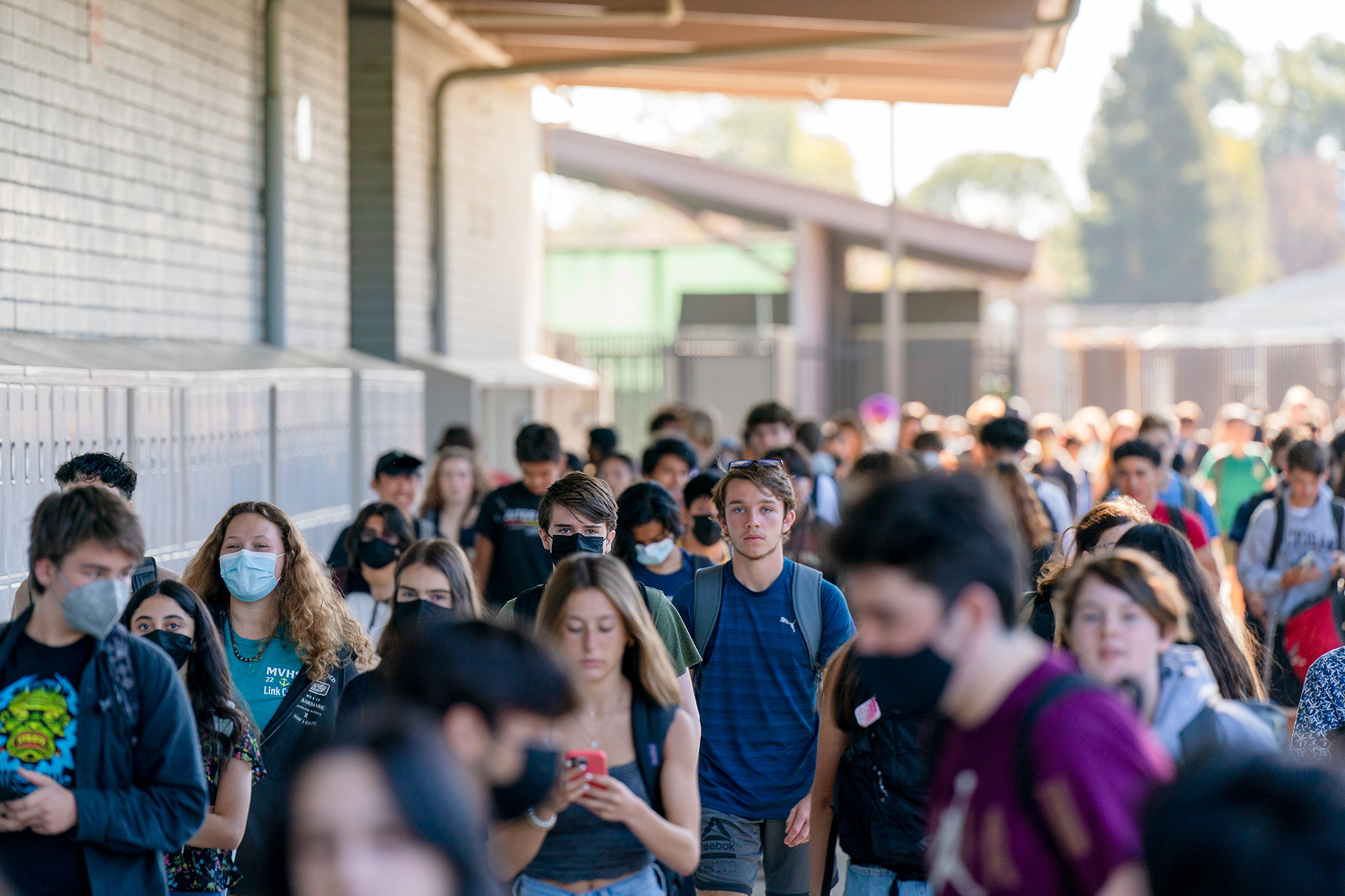Local high schoolers' performance improved on standardized tests this spring compared to before the pandemic, results that stand in contrast to declining numbers statewide.
In the Mountain View Los Altos Union High School District (MVLA), the share of students that "met" or "exceeded" state standards increased by 1.1 percentage points on the English language arts exam and 0.9 points in math compared to the 2018-2019 school year.
Across California, the percent of students meeting or exceeding standards declined 4 points in English and 6.4 points in math. Santa Clara County also saw an average decline of 2.6 points in English and 5.2 points in math.
These drops have been widely attributed to the impact that the pandemic and school closures had on students.
“These baseline data underscore what many of us know: that the road to recovery is long and our students will need sustained support over many years," State Superintendent of Public Instruction Tony Thurmond said in a press release.
The state released the Smarter Balanced standardized test data on Oct. 24. This spring marked the first year of relatively normal testing since the 2018-2019 school year. Tests weren't given during the 2019-2020 school year and were optional in 2020-2021. At the high school level, only 11th graders take the Smarter Balanced tests.
The exams were shortened, compared to before the pandemic, but the state said the scores had the same accuracy because the number of questions were reduced consistently across test areas, nonprofit news outlet EdSource reported.
MVLA Associate Superintendent of Educational Services Teri Faught credited the improvement in her district's scores, despite the pandemic, to the efforts teachers have made.
"That's just accolades to our teachers (for) teaching strong curriculum (and) teaching to the common core standards," Faught said.
In addition to the improvement compared to 2019, MVLA students also continue to consistently perform above state and county averages. Overall, 83.7% of MVLA students met or exceeded English standards this year, compared with 60.6% across the county and 47.1% statewide. In math, 69.7% of students met or exceeded standards, versus 51.4% countywide and 33.4% across California.
Within MVLA, all racial groups saw improvement compared to 2019 in English and all groups except Latino students saw growth in math. There was a 1.4 point decline in the percent of Latino students meeting or exceeding math standards, compared to a 2.3 point increase for white students and 6.6 point jump for Asian students.
In English, there was a 3.9 point increase in the share of Latino students meeting or exceeding standards, a 0.4 point improvement for white students and 4.5 point increase for Asian students.
When looking at MVLA students who are considered socioeconomically disadvantaged (SED) by the state, there was actually a 5.3 point increase in the share of these students who met or exceeded the English standards, compared to 2019. The share of non-SED students meeting or exceeding standards declined by 1.5 points.
In math, the results were more even, with a 0.7 point decline for SED students and a 1 point drop for those who aren't SED.
Socioeconomic status is determined based on family income, as well as whether a student is migrant, homeless or in foster care, or if neither parent graduated from high school.
"It's great to see that our critical populations remain somewhat consistent, if not increasing a little bit in certain areas on certain tests, as opposed to taking some big hits, like we've seen in other districts and across the state," Faught said, referring to groups including SED students, those learning English and Latino students.
Despite relative improvements, large gaps in achievement between groups remain. Only 28% of SED students met or exceeded standards in math this spring, compared to 78.3% of their non-SED peers. In English, 57% of SED students met or exceeded standards, compared to 89% of non-SED students.
There are also persistent gaps between racial groups. This spring, 60.2% of Latino students met or exceeded standards in English, compared to 93.9% of white students and 95% of Asian students.
The disparities are even larger in math, where 29.6% of Latino students are meeting or exceeding standards, compared to 83% of white students and 92.9% of Asian students.



Comments
Registered user
Cuesta Park
on Nov 8, 2022 at 3:51 pm
Registered user
on Nov 8, 2022 at 3:51 pm
These results should be compared to the MVWSD results from the same testing agency. Note - the high school district is doing MUCH BETTER about not increasing the academic achievement GAP through out this time. Yet, in the elementary and middle schools of Mountain View, GAPS got much worse (in some cases Much Much worse) between poor (SED) and average wealth family students and Hispanic and Asian / White students.
Don't the numbers seem to indicate - MVWSD did really not do so well in relation to What Can Be Done (was was done) with poor and Hispanic students from our own communities?
( Most of the poor and Hispanic students in MVWSD and MVLA come from the same families! )
QED